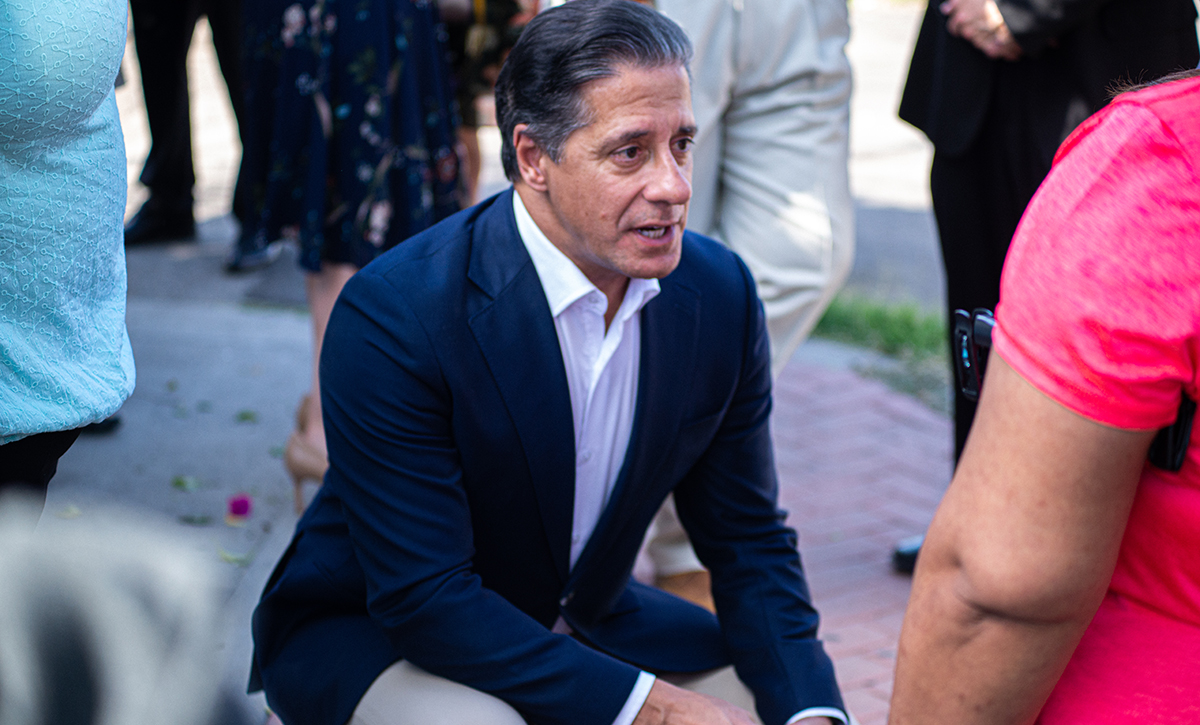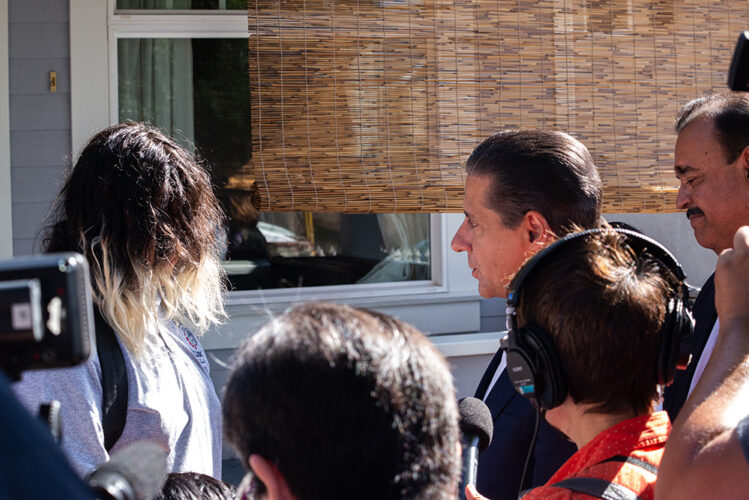Four Things Carvalho Learned From Following Chronically Absent Students
LA superintendent said he would ‘personally take on’ 30 chronically absent students. Here’s what he took away from his experience

Get stories like these delivered straight to your inbox. Sign up for The 74 Newsletter
After half of Los Angeles Unified students were chronically absent in the 2021-22 school year, superintendent Alberto Carvalho tweeted in April he would personally take on 30 chronically absent students to better understand the issue.
In an interview earlier this month with LA School Report, Carvalho said he was able to have “regular contact” with 10 of the students he set out to follow, having meetings and lunches with them, and visiting their homes.
“The rest of the students graduated or moved to another state … it became difficult to get a hold of them,” said Carvalho, following remarks he made at an education conference last month in Orlando, Florida.
LAUSD has suffered vast declining enrollment for years, exacerbated by the pandemic and is now trying to amp up larger efforts to get kids regularly attending school.
On the first day of the 2022-23 school year earlier this month, there were more than 60,000 students missing. But the 89% attendance rate was an improvement over last September’s rate of 77% on day one.
Carvalho and his team are working to personally engage with and understand students who have been chronically absent in order to curb chronic absenteeism this school year.
“The students that I did follow … were living in conditions that were worse than we even knew,” he said, adding there were sometimes drug addicted parents or undocumented students living with adults not able to provide “adequate care,” leaving children to fend for themselves.

Carvalho spoke about four things he learned about chronic absenteeism, declining enrollment in L.A. schools, and how to tackle absenteeism in the coming school year:
1. Many Chronically Absent Students Do Not Have “An Adult Providing Adequate Care”
“In many instances there was an adult present, but not able to provide adequate care,” Carvalho explained. One of the students Carvalho followed was a senior in South Los Angeles who just came out of the juvenile justice system. The young man described his mom as “a loving person, but dealing with severe addiction.”
The teen ended up caring for his two younger siblings as well. “In so many of these situations you see a teenager basically becoming a full-time caretaker … it’s too much for them to take on,” Carvalho said. “In that instance we alerted appropriate entities to make sure the kids were cared for, but we also need to ensure the mom can get the care and resources she needs.”
Another student Carvalho followed was a young woman who came to the U.S. alone and was undocumented, so she was living with an older cousin who was working and didn’t have an adult looking after her, either.
“There are many cases I’ve seen where kids are living with adults who are incapable of providing the care they need … we need to pinpoint these students and show them they have help and support.”
2. Chronically Absent Students Are Caring for Young Siblings, Who Often Are Not Enrolled In School Themselves
Carvalho said he saw many high school students taking care of young siblings because parents were overwhelmed with work or had too many other responsibilities. “You have instances where teenagers are caring for siblings who aren’t even enrolled in the school system yet.”
Carvalho said these young children who aren’t enrolled in school account for some of the ten to twenty thousand students he said were missing from school rosters this year. Carvalho describes these students as the “lost children of Los Angeles” – those who are either not enrolled in school at all and some who have simply stopped attending.
Carvalho said one chronically absent student he followed had a sibling he was trying to get enrolled for first grade. The teen explained the enrollment process as “a loop” he couldn’t figure out how to navigate.
Carvalho also said he found that many parents decided not to send their kids to prekindergarten and kindergarten last year. “Those grades are where we’ve seen the greatest decline in enrollment … Parents may be choosing not to send their kids to school for economic reasons, misinformation, fear … we want to build relationships with those parents who are hesitant.”
3. Students are Working Instead of Going To School
Carvalho became close with one student he followed, a junior who lived in the valley who was working two jobs and caring for her two younger siblings. He also said he followed a student who had to take on a third job this summer in order to help his parents make ends meet.
Carvalho mentioned that some high school students feel discouraged even going to school when they know they won’t be able to afford college.
“This one woman, Nicole, that I was following ended up getting a scholarship to college. At first she was discouraged, because she still didn’t think she could afford it, but we ultimately helped her get more financial aid.”
Nicole is now attending a college in Southern California, he said.
“We want these students to feel supported by the collective weight of our system. They should feel that they are not alone in navigating their education.”
Carvalho also mentioned some students who come to the U.S. at 15, 16, or 17 years old may be going straight to work and never enrolling for school at all.
4. LAUSD Will Sustain Their Efforts and Target “Early Absenteeism” This Year
Since Carvalho announced his plan to personally follow 30 chronically absent students in April, he and his team have been “making calls, knocking on doors, really doing anything we can do to get connected with these students.” Carvalho said that as he hoped, his initiative to personally follow chronically absent students inspired many principals and administrators to do the same thing. “We decided to turn what was initially a symbolic move into a coherent plan in advance of this school year.”
Earlier this month Carvalho and his team of counselors, staffers, and volunteers knocked on the doors of students who did not regularly show up for school last year. Carvalho said he and his team plan to do this again during the coming school year.
“This cannot be a one and done thing. It needs to be a systemic approach where we continue to make contact … connect these students to enrichment programs and mental health resources …we cannot have repeat conditions of last year.”
Carvalho said that after the first week or two of school, administrators will target students who are already showing a pattern of absenteeism and hold another event to understand what is going on with those students and families. “We will repeat that as often as need be,” he said. We’re not going to give up on any child.”
Get stories like these delivered straight to your inbox. Sign up for The 74 Newsletter

